

ZUSAMMENFASSUNG: Frühchristliche Entdeckungen (bis 313 n. Chr.) in den Römischen Provinzen aus der Umgebung der Dakien Beiträge zur Geschichte des Frühchristentums (Vorkonstantinisches). I. Um die Erforschung des Frühchristentums in den dakischen Provinzen (106-275/ 303) zu erleichtern, haben sich die Verfasser vorgenommen, die Lage des Christentums aus dieser Zeit in den mit den Dakien benachbarten römischen Provinzen zu analysieren sowie in jenen, zu denen sie engere Verbindungen hatten und die eine Brücke zu den stark christianisierten Provinzen bildeten. In der Ausarbeitung haben sich die Verfasser auf archäologischen Entdeckungen gestützt. Eine umfangreiche und auf Themen aufgeteilte Literatur liegt zu Grunde der Analyse. II. Die erforschten Provinzen (Noricum, Pannonia Superior, Pannonia Inferior, Moesia Superior, Dalmatia, Moesia Inferior) waren im 2.-3. Jahrhundert gut organisierte und verwaltete Grenzgebiete; schon seit dem 1. Jahrhundert n. Chr. erobert, haben sie sich gut in die römische Organisierung eingegliedert; ihre Wirtschaft blühte und die Bevölkerung (Kelten, Illiren, Moesen und Thraken) wurde ziemlich schnell romanisiert. Die Provinzen, die sich zwischen den westlichen und östlichen Teilen des Reiches befanden, waren besonders reich an Kulten; die „nationalen“ wurden zuerst von den griechisch-römischen und nachher von den orientalischen überlagert; die Formen des Synkretismus sind zahlreich und interessant; zwischen den aus dem Orient von zahlreichen Kaufleuten, Händlern und Kolonisten mitgebrachten Religionen befand sich auch das Christentum. Ein anderer Weg, auf dem dieses eingedrungen ist, war vom Westen her (Italien und insbesondere Rom). III. Die historische Literatur über die Anfänge des Christentums in diesen Provinzen beruht noch immer auf Legenden, auf den Texten der Apologeten und weniger auf den archäologischen Entdeckungen. Die Anzahl der Beiträge ist gering und die existierenden haben sich eher auf das 4.-6. Jahrhundert konzentriert. IV. Die Verfasser haben einen Register der archäologischen Funde mit christlichem Charakter zusammengestellt (siehe Kap. VI), in dem die Gegenstände in vier großen Gruppen eingeteilt wurden: a. Gegenstände, die zum Ablauf des Kultes dienten; b. eigentliche christliche Gegenstände; c. zum Christentum bekehrte Gegenstände; d. Erkennungszeichen. Aufgrund dieses Registers beurteilen sie den Wert der christlichen Legenden, der apologetischen Texte und versuchen eine Verbindung zwischen ihren Daten und den archäologischen Tatsachen, Wirklichkeiten zu finden. V. Anstatt der Schlußfolgerungen legen die Verfasser einige Feststellungen dar. a. die archäologischen Funde sind ziemlich zahlreich; sie sind insbesondere in den Städten überwiegend; ihre Verbreitung beweist sowohl die Eindringungswege des Christentums als auch in erster Linie einige Ideen/ Gedanken aus den schriftlichen Quellen.
More...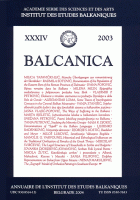
Keywords: Bela de Gonda; roman times; the Iron Gate;
The purpose of this article would certainly be to take us back in time to the end of the 19th century, and to introduce us to the conditions of that time on the territory of the Iron Gate, which have been forever changed by the modern development of civilization. Along that path, we will follow the text of the very important but not well known literary work of the Hungarian engineer Bela de Gonda; L’amelioration des Portes de Fer et des autres cataracts du Bas-Danube, which was announced in Budapest in 1898. It seems that the book itself was composed for the purpose of describing enormous technical works; the construction of roads and navigable canals through ravines during the 19th century, which count István Szécenyi began in 1833. However, one completely separate segment, which is also the subject framework of our article, is dedicated to the works of the Romans on the Danube. It is marked number four and in the original text it is titled Les Travaux des Romains dans le Contrees du Bas-Danube. For the first time, translated from French, with important notes and discussions, is a short but especially important segment of Bela de Gonda’s book. Gonda tried to add to his own observations the experiences of previous researchers like Count F. Marsigli from the beginning of the 18th century, and later G. Teglas and the enthusiast G. Nevdeck and P. Vasarhelyi from the 19th century. In that manner he composed an all-inclusive review of the then current knowledge of the Iron Gate ancient times during the Roman period. Without any intention of disturbing the authentic expressions of Gonda, worthy on their own, the framework of observations points out the interpretations and realizations of modern researchers of the Iron Gate in ancient epochs. We believe that Gonda’s expressions should certainly be considered an important supplement to our overall picture of the first explorations of the Iron Gates and its antiquity from the Roman period. We should not forget to mention that Gonda’s book, in addition to the archeological segment, which this article is written about, contains important information from other scientific fields. Here it would be difficult to name every topic that Bela de Gonda still deals with, and thus we find the need to translate the entire work into Serbian so that it would be available to the entire skilled public in our country.
More...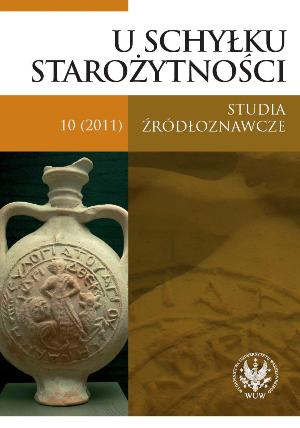
Keywords: KALUDIUSZ II; HISTORIA; MAXIMUS
The History of the Roman Empire at the time of the crisis of the 3rd century is not known well. The historicity of the Battle of Naissus is controversial. One of the most important arguments put forward in its favour is the assumption of the title Gothicus Maximus by Claudius II. It is the earliest attestation of this title in the Roman propaganda. In my article I analyse the assumption of the new cognomina ex virtute in the 3rd and 4th centuries (Carpicus Maximus, Gothicus Maximus, Alammanicus Maximus, Franciscus Maximus, Persicus Maximus). Emperors did not need a great undeniable victory to introduce new cognomina ex virtute. The assumption of a new title served to express the significance of the cognomen given to the ruler, not the scale of his success. The title Gothicus Maximus cannot be regarded as a proof of a spectacular success of Claudius II at Naissus, but only of his victory over the Gothi.
More...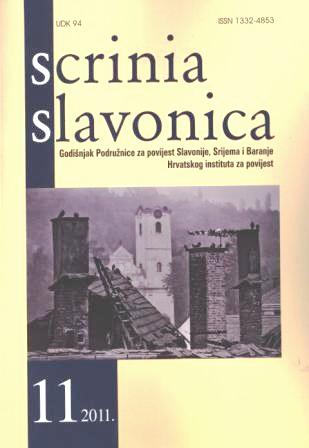
Keywords: Cibalae; urban degradation; settlement shift; Late Antiquity; Early Middle Ages
Using Cibalae as example, this paper discusses the Roman city in South Pannonia after the breakdown of Roman rule under signifi cantly changed political, economic and demographic conditions at the transition from Late Antiquity to the Early Middle Ages. The purpose of the paper is establishing the basic processes of urban degradation of the Roman Cibalae and its transformation with particular respect to archaeological topography in Late Antiquity and Early Middle Ages. In relation to that, the paper details the circumstances of urban structure degradation, identifies the shifts in the settlement of the area and analyses the testimonies to the presence of new populations. The Cibalae example is symptomatic of the destiny of most late antique cities in South Pannonia. The somewhat prosperous urban community for the duration of the entire 4th century, Cibalae was exposed to a rapid decline since the end of the same century, primarily due to utterly unfavourable military and political conditions within the Sava-Drava-Danube confluence. During the period, the city experienced the degradation and reduction of its urban space, a logical consequence of a significant loss of urban population, finally turning into a rural environment. The findings testifying to the everyday life in Cibalae become sporadic and rare since the beginning of the 5th century. The Huns’ period, as it seems, dealt the final blow to the urbanicity of Cibalae. The city could not even rely on its bishop, since the Cibalae diocese ceased existing in the first half of the 5th century, as much as we are able to tell. The Ostrogoth rule during the first half of the 6th century did not significantly improve the conditions, although we may presume that the Ostrogoth rulers contributed to a certain revival of Cibalae area. It may have been the basis for the observed growth of the former city under the Gepid rule, which had grown to the position of the second largest settlement of the South Pannonian region of the Gepid kingdom in the middle of the 6th century. While colonising Cibalae, the Gepids undoubtedly gave priority to their own military, strategic and other considerations. It would not be justified to ascribe the fall of Cibalae and other South Pannonian cities exclusively to their military and strategic function, although it did play an important role in turning the important cities to targets of attacks. On the other hand, strategically convenient position could have had a favourable impact on the readiness of government to maintain the urban structure of the city in spite of the difficulties, as seen from the examples of Siscia and Sirmium in the 6th century.
More...Keywords: Srem (Syrmia); Cumans; Mongols; 1241; southern Hungary; Bela IV; John Angelos
On the eve of the Mongol invasion of Hungary in 1241 in order to defend the country as successfully as possible the Hungarian King Bela IV welcomed Cumans to his state (1239). They had previously clashed with the Mongols in the area of the Black Sea region of steppes and they were threatened by them. However, after the murder of their khan Kotyan, Cumans left Hungary in 1241 and found refuge in neighboring Bulgaria. During the retreat southward they devastated the Hungarian border area of Srem (Marchia) and shortly after that armed Mongols themselves passed through this land. On the basis of the analysis of known and indirect sources still not considered in historiography in the context of this topic and based on the views of historiography the author investigates the possible extent of Cuman and Mongol devastation of Srem and these areas in the south of Hungary from 1241 to 1242. The author of the paper adopts a critical approach towards the news of Master Roger, who was particularly shocked by the Cuman destruction of Marchia. His report was credible, but the writer did not have the opportunity to stay in Srem before or after the invasion. The author believes that the Cuman and Mongol invasion did not fully and dramatically influence the depopulation of Srem and the disruption of the local economic life; instead, this invasion had devastating consequences only in some of its segments.
More...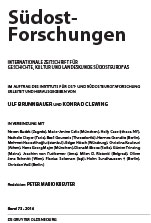
Peter SCHREINER, Byzantinische Kultur. Eine Aufsatzsammlung. III. Die materielle Kultur. Hgg. Christina Katsougiannopoulou / Silvia Ronchey. Rom: Edizioni di storia e letteratura 2011 (Opuscula collecta, 8). XXII, 246 S., ISBN 978-88-8498-368-8, € 36,– Peter SCHREINER, Byzantinische Kultur. Eine Aufsatzsammlung. IV. Die Ausstrahlung. Hgg. Silvia Ronchey / Raimondo Tocci. Roma: Edizioni di storia e letteratura 2013 (Opuscula collecta, 9). XLV, 287 S., ISBN 978-88-6372-503-2, € 39,95 Alexandru MADGEARU, Byzantine Military Organization on the Danube, 10th-12th Centuries. Leiden, Boston: Brill 2013. 212 S., 15 Abb., ISBN 978-90-04-21243-5, € 112,– Đorđe BUBALO, Pragmatic Literacy in Medieval Serbia. Turnhout: Brepols Publishers 2014 (Utrecht Studies in Medieval Literacy, 29). XXVI, 428 S., ISBN 978-2-503-54961-3, € 100, Hans EDELMAIER, Dracula. Wojwode der Walachei Vlad III. Zepesch, ca. 1430-1476. Staatsmann, Feldherr, Medienopfer. Salzburg: Osterreichischer Milizverlag 2014. 340 S., zahlr., meist farb. Abb. u. Ktn., ISBN 978-3-901185-49-6, € 35,–
More...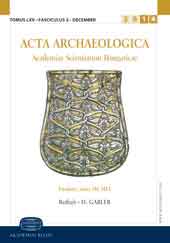
Keywords: Budaörs; Alemannic expedition; Late Roman Settlements;
Im Zuge einer 2002 in Budaörs stattfindenden vorbeugenden archäologischen Freilegung kam – neben zahlreichen Steindenkmälern mit Inschrift – auch ein römischer Sarkophag ans Licht, dessen Darstellungen und Inschrift besondere Beachtung verdienen. Aus diesem Grund haben wir uns entschlossen, ihn in der vorliegenden Studie zu publizieren.
More...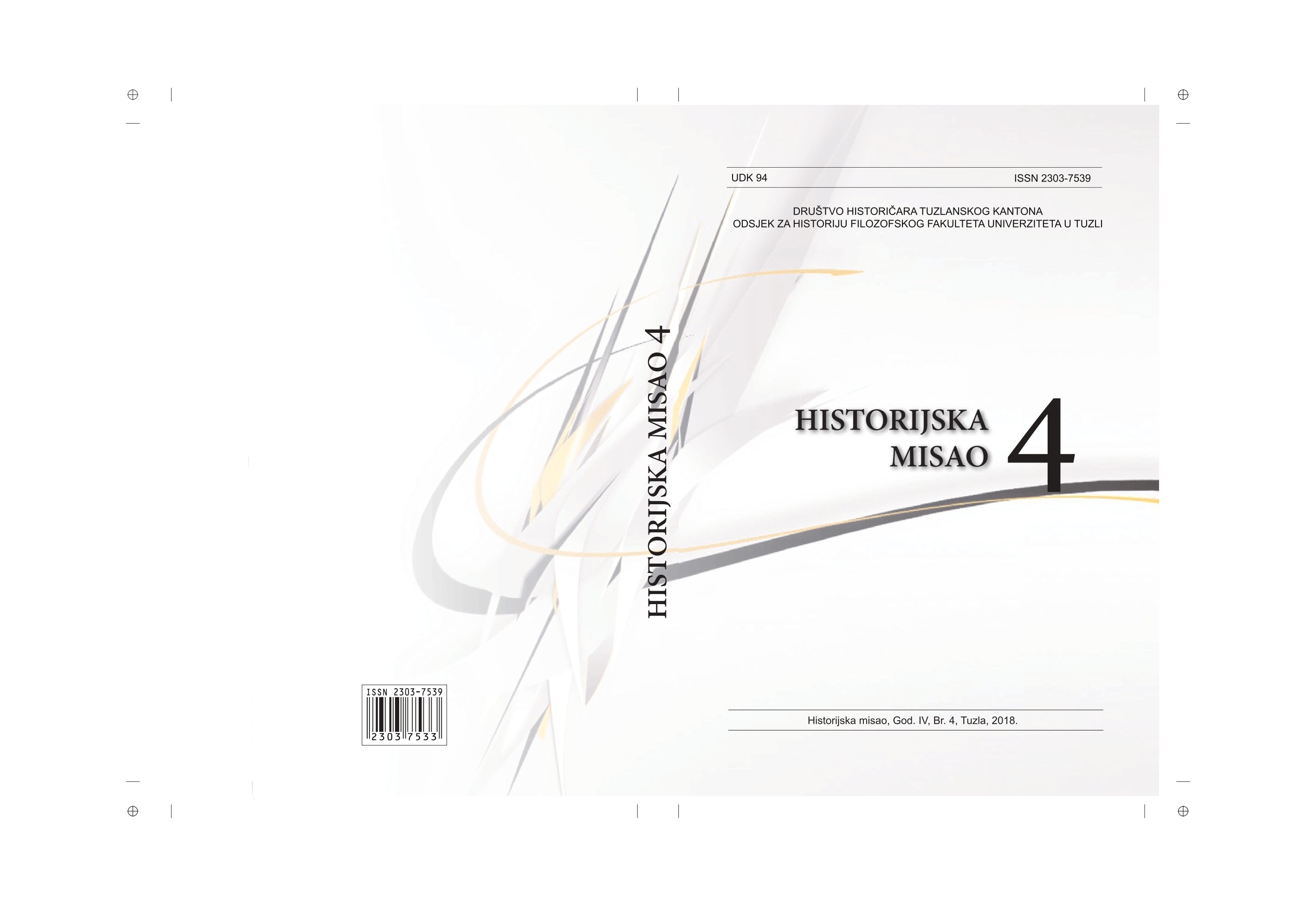
Keywords: road; station; settlements; milestone; Dolabela; the Romans; the Roman Empire; Dalmatia; Pannonia; Salona; Argentaria; Domavia; Sirmium;
The Roman road Salona-Argentaria belongs to the category of the most important roads that the Romans built in the territory of the present day Bosnia and Herzegovina. It was built during the reign of Emperor Tiberius (from 16 AD to1217 AD). Its construction established a direct connection between Salona (today’s Solin near Split), which was at that time one of the main ports on the Adriatic and the seat of the Roman province of Dalmatia, and Domavia (today’s wider area of Srebrenica), as well as the connection with Sirmium, the capital of the province of Pannonia. This road ran from Salona to Duvanjsko polje to Ravanjsko polje then to Gornji Vakuf to Vitez to Busovača to Kiseljak to Sarajevo polje to Romanija along the valley of the Drinjaca River to its firth in the Drina and further upstream the Drina towards Argentari and downstream the Drina to the Sava and Sirmium. Apart from its great economic importance, this road had a special strategic importance for the Roman Empire. The Romans used the Salona-Argentaria road to transport people and various types of goods, and to transfer military units and weapons to the Roman limes in the area of the Danube. The archeological remains of the Salona-Argentaria road in the territory of today’s Bosnia and Herzegovina belong to the category of the earliest monuments of material culture from the Roman period.
More...
Keywords: Roman Empire; Dalmatia; Constantine the Great; Pannonia; Licinius; Constance I; Constantius II; tetrarchy; Christianity;
This study deals with political, economic and religious conditions in the province of Dalmatia during the reign of Constantine the Great and his successors.Political turmoil, followed by civil wars, was particularly significant during the II and III tetrarchies, but also afterwards. In all these events, the province of Dalmatia,unlike Pannonia, was spared war activities. Thanks to this, its economy could besafer to function. During the third tetrarchy, the doors of the free confession of faith were opened to Christians, resulting in the creation of other religious currents,42which were also found in the provinces of Dalmatia and Pannonia. Constantine made reforms that included the province of Dalmatia. Certain administrative reforms of Dalmatia have also occurred during the time of Constantine’s heirs,marked by the general crisis and the growing uncertainty.
More...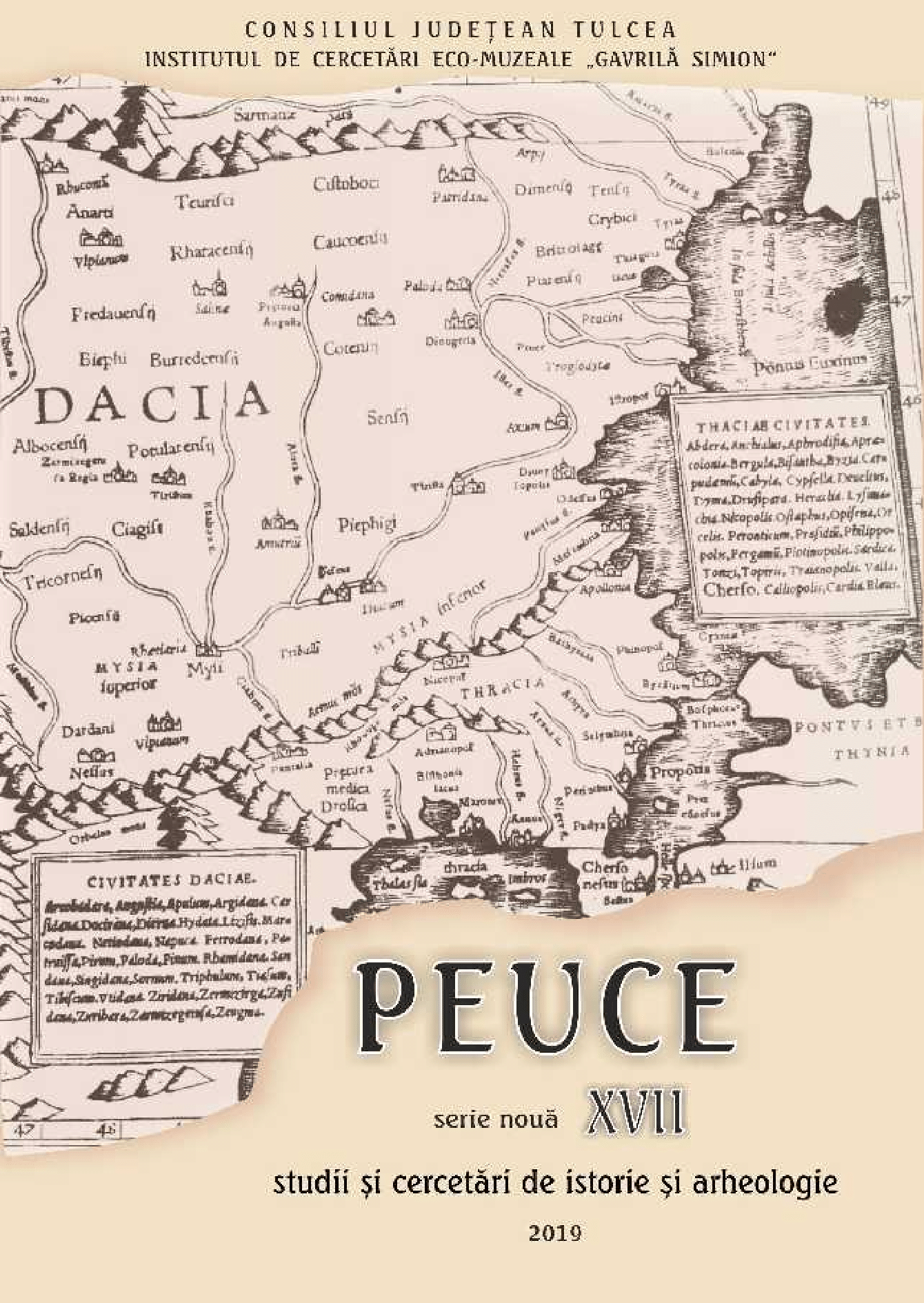
Keywords: Archaeology;lamps;Roman Empire;
The present article aims to analyze the late antique lamps with discus bearing an arch or a niche laying on two columns. This architectural motif has been discussed for forty years for its meaning, regardless of its rendering or the type of lamps it adorned. We have identified four different types of lamps and two main renderings. The ovoid lamps adorned with an arch on columns, quantitatively the most frequent, are to be found mostly in Constantinople and near cities, the Black Sea coast and the Danubian sites, but also in Egypt (where they appear also in a late variant), Cyprus and Byblos. With a complete atlas comprising several unpublished lamps, all the evidences brought together allow to make some "order” within the past hypothesis and open another door to understanding the booming economy of the Pontic area as well as the recently rebuilt Danubian limes fortresses, during their apex, in the late 5th and 6th centuries AD.
More...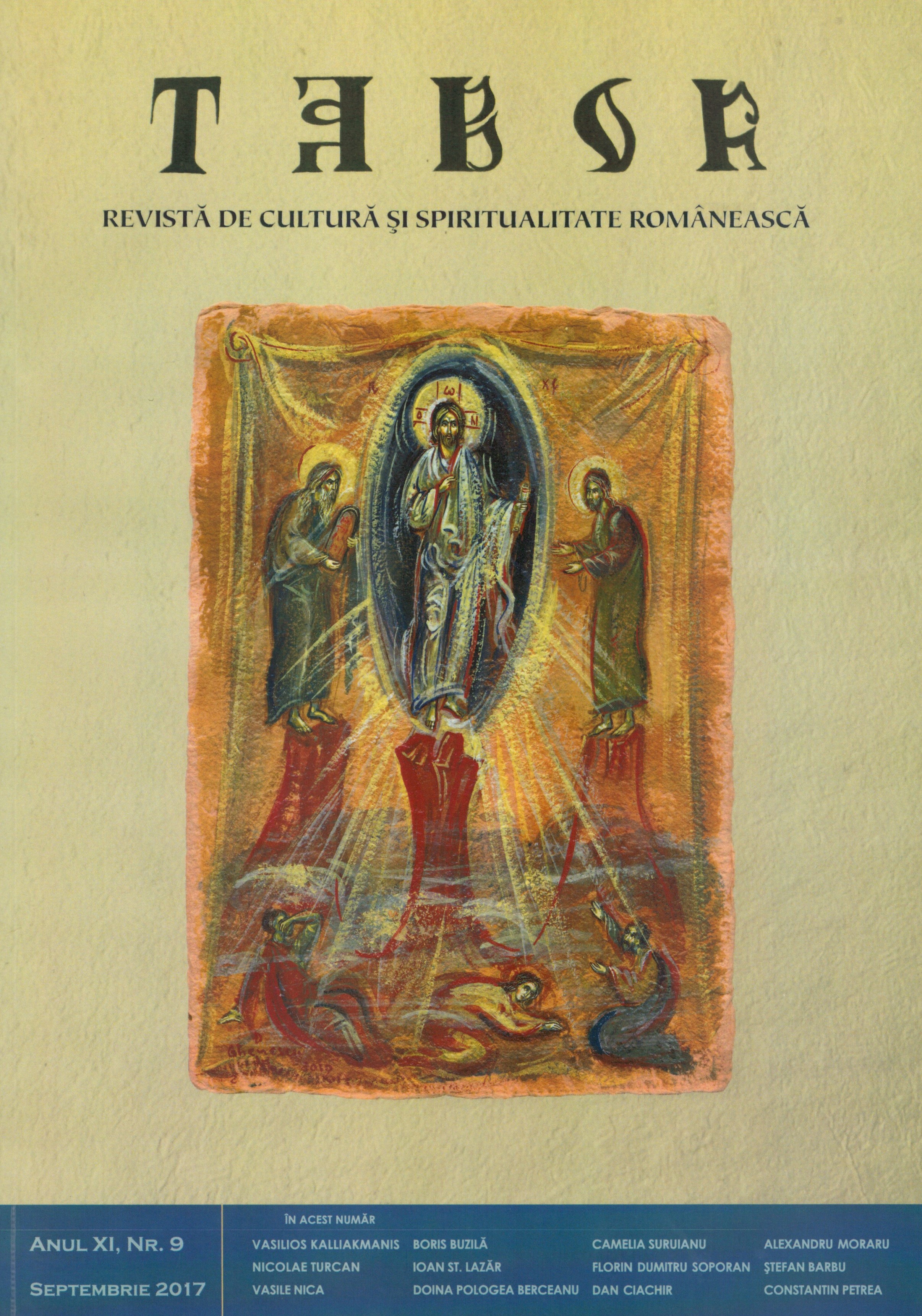
Keywords: VASILE ROJNEAC; Sfântul Niceta de Remesiana. Viaţa şi activitatea; Cluj-Napoca; Presa Universitară Clujeană;
Review of VASILE ROJNEAC, Sfântul Niceta de Remesiana. Viaţa şi activitatea, Cluj-Napoca, Presa Universitară Clujeană, 2017, 330 p.
More...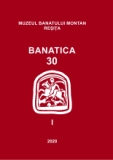
Keywords: Late Roman funerary painting; banquet; funeral procession; offering scene; Viminacium; Beška;
The article discusses various types of the scenes that contain servants and deceased depicted in late Roman wall painting, especially in the territory of today’s Serbia, and makes comparisons with analogous examples known throughout the Mediterranean world. These types represent servants in the procession as well as reduced versions, when two or only one servant figures are painted. Well known interpretations of the reminiscences of the prestigious life status of the deceased and their wish for wellbeing in the afterlife are discussed together and in regard to the testified funeral rites, which include a funeral banquet and funeral procession, with special attention to the position and role of servants/slaves in them. A new possibility for the reduced scenes with servants depicted in Viminacium graves G-160 and G2624 introduces an interpretation of this motif as a reference to the custom of offerings at the grave after the funeral or during some of the commemorations which followed the funeral.
More...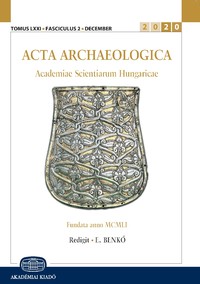
Keywords: Roman brick and tile kilns; Roman brick and tile production; pottery workshops; tile stamps; Pannonia
Dozens of Roman tile kilns have come to light in Pannonia during the last one hundred years. This paper summarizes the published tile manufacturing workshops of Pannonia in present-day Hungary, Austria, Slovenia, Croatia, and Serbia. In the first part it gives a short general overview of the structure of a workshop, discusses the problems of defining tile kilns, describes the parts of the kilns themselves and outlines the systems of classifications. The second part gives a description and catalogue of the Pannonian tile kilns.
More...
Keywords: Roman cities; urbanisation; Danubian provinces; urban studies; Roman archaeology;
Damjan Donev, The Busy Periphery: Urban Systems of the Balkan and Danube Provinces (2nd – 3rd c. AD), Archaeopress, Roman Archaeology Series 61, Oxford, 2019, ISBN-10: 1789693497, 380. p.
More...
Keywords: Roman Empire; Serbs; Ottoman Turks
This paper looks at the typology of borders which have traversed the Balkan lands for centuries. They have been diverse - geographical, political, economic, ethnic, linguistic, religious and cultural. As a result of their length of duration, consequences and importance, they led to phenomena which can hardly be fully appreciated. Serbs lived along those borders, be they already existing or created over time. This research is focused on two borders. The one created by the division of the Roman Empire (395) and strengthened by the schism of Christianity (1054), and the other, completely different, created by the Ottoman conquest of the Balkan lands in the fifteenth century. Local Balkan borders, on the other hand, have never acquired a broader significance in the culture of this region
More...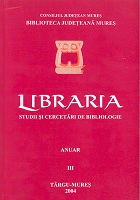
Keywords: enlightenment; Gheorghe Şincai; historical context; work;
Pierdută pe undeva prin hăţişul dezinteresului mass-media, dominată tot mai insistent de mijloacele audio-vizualului, insensibilă la adevăratele valori culturale româneşti, împlinirea a 250 de ani de la naşterea marelui cărturar transilvan Gheorghe Şincai s-a transformat, prin forţa contextului, într-o sărbătoare judeţeană. Este adevărat, o sărbătoare onorată de prezenţa a numeroşi oameni de cultură din întreaga ţară, a oficialităţilor mureşene şi a numeroşi oameni simpli din zona în care s-a născut şi a crescut cărturarul. Manifestările omagiale au culminat cu Simpozionul Naţional Gheorghe Şincai - sub semnul istoriei şi a prilejuit urcarea la tribună a numeroşi specialişti în istorie şi istorie culturală. Rândurile noastre târzii, care nu au putut fi pregătite pentru momentul aniversar, apar ca un pios omagiu şi ca o încercare de a revedea, din perspectivă naţională, aspecte ale operei unui mare întemeietor de spirit românesc.
More...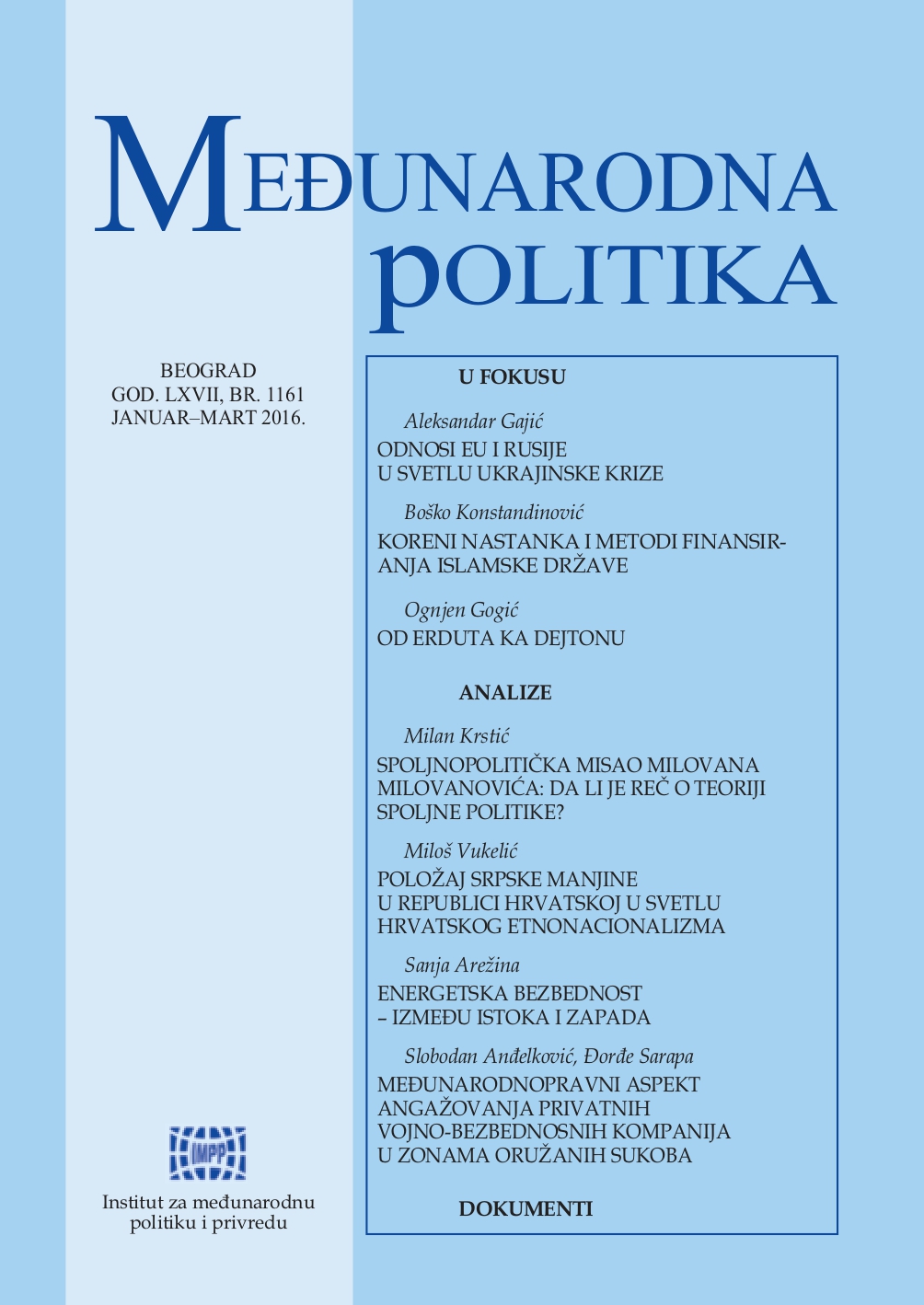
Keywords: RSK; Z-4; Operation Storm; Eastern Slavonia; Erdut Agreement; Dayton
After Croatia retook control over previously Serb-held areas of Western Slavonia and Krajina in military offensives “Flash” and “Storm” launched in May and August of 1995, Eastern Slavonia, Baranja and Western Sirmium remained as the only part of Croatian territory under Serbian control. While in autumn of 1995 the international community was focused on achieving a negotiated settlement for Bosnia, the Zagreb’s priority was to reintegrate Eastern Slavonia into Croatian constitutional framework. As it became clear that “the road to Dayton necessarily lead through Eastern Slavonia”, President Clinton’s administration sought to find a solution for Eastern Slavonia, which would be satisfactory to Croatian President Tudjman in order to get his support for agreement on Bosnia. The final agreement on the peaceful reintegration of Eastern Slavonia was reached between Presidents Tudjman and Milosevic in Dayton, whereas the formal document (Erdut Agreement) was signed on 12 November in Zagreb and Erdut.
More...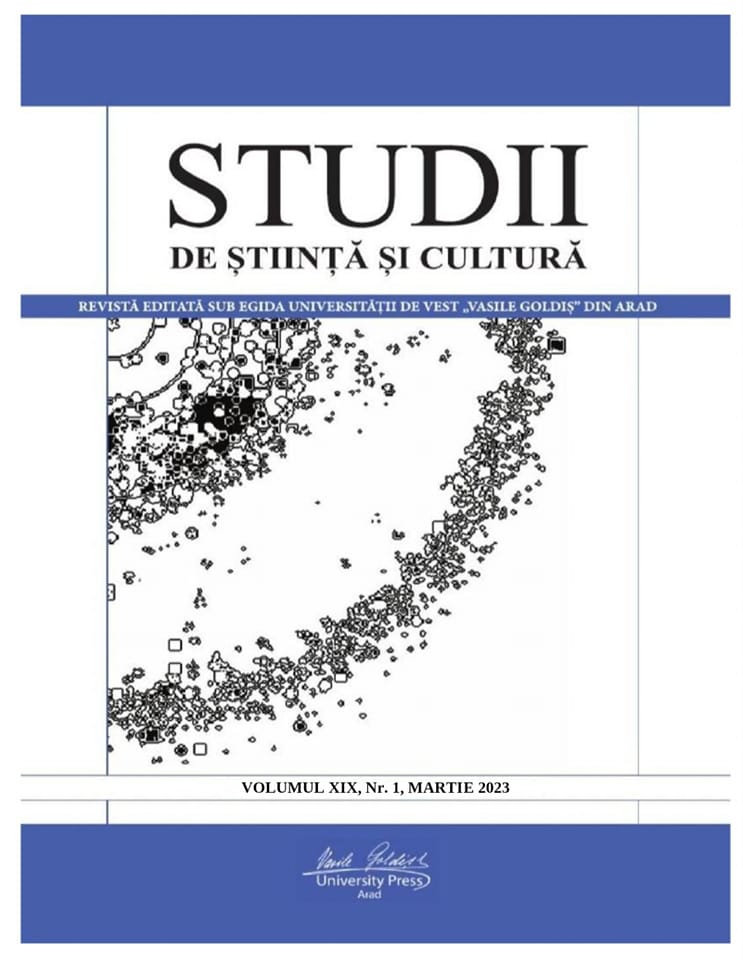
Keywords: Young German Movement; Romania; Nazism; Germans; Romanian authorities; journalists;
The paper examines the number and percentage representation of the German national minority in the Kingdom of Serbs, Croats and Slovenians, i.e. the Kingdom of Yugoslavia after unification. There have been especially analyzed certain German media, as well as the economic activities and land ownership of Vojvodina Germans in the interwar period and the attitude of Germans from the Yugoslav Banat towards Romania, and their relationships with the Romanian authorities. The authors have found that a significant number of German-language newspapers written in German Language were published in Timisoara and Arad at the time of the disintegration of the Austro-Hungarian monarchy. The authors of the paper have analyzed the Young German Movement that operated under the leadership of Nikolaus Hasslinger, who acted from the Yugoslav positions, advocated for the cooperation of the majority nation and Germans, and opposed Nazism. They have also analyzed writing of media of the Young German Movement, media of the German minority organization Kulturbund, as well as newspapers written in Serbian language which supported the Young German Movement. Despite the failure to gain a large number of supporters, the Young German Movement was significant not only politically, but also in the light of media as an attempt to oppose the nazification of the Kulturbund and its open implementation of the policy of the Third Reich.
More...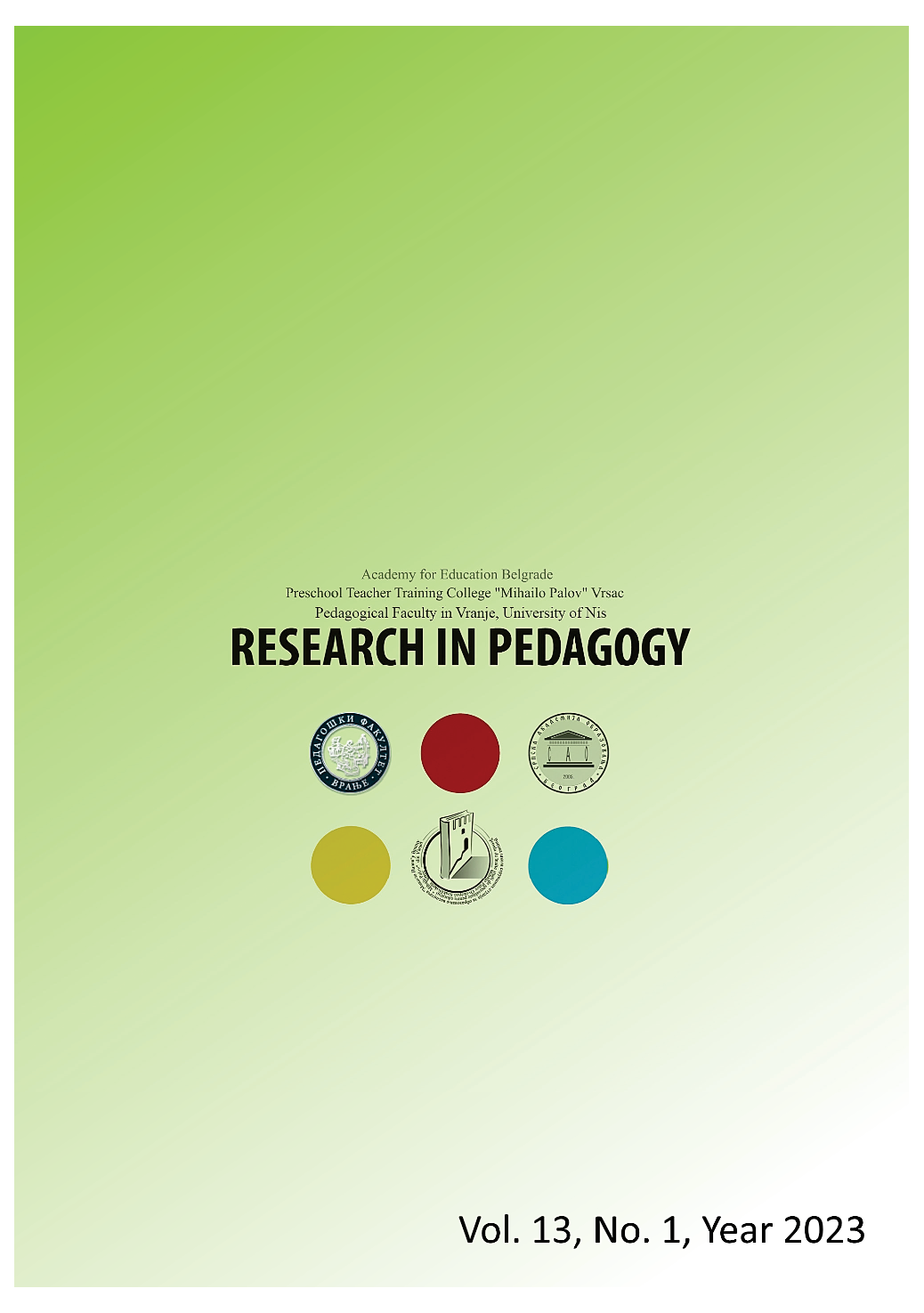
Keywords: communicative language ability; intelligence; school success; early formal education
Although numerous studies show that intelligence, measured by various tests, is a significant predictor of school achievement, this cognitive variable can only explain about 50% of the variance. It is also known that communicative language ability represents an important basis for learning subject content in the early period of formal education. One of the most comprehensive models of language ability (Bahman, Palmer, 1996), in addition to strategic knowledge, includes language knowledge that includes organizational language knowledge (grammatical and textual) and pragmatic language knowledge. Although the non-cognitive factors de facto participate in the explanation of school success, the aim of the research presented in this paper was to determine the predictive influence of intelligence and communicative language ability, i.e. organizational and pragmatic language knowledge on differences in school achievement in Serbian, English and Mathematics at the end of the first half of the fifth grade. The research was conducted on the sample of 197 fifth-grade students (51% girls, average age 11.5 months) in elementary schools in Loznica. The authors of the paper applied an adapted form of the test of communicative language abilities that was applied in research in a bilingual context (Šimonji-Černak, 2005). Revisk was used to test verbal and manipulative intelligence (Biro, 1997). We started from the assumption that organizational language knowledge, has a more significant predictive influence on differences in school performance in the above-mentioned subjects than intelligence. Hierarchical regression analysis model determined that the predictor variables of organizational language knowledge explain 36.8% - 49.4% of the variance in school achievement, while the intelligence variables are related to the achievements in Serbian and Mathematics and explain 0.6% - 3% of the variance. A significant partial contribution of pragmatic knowledge and knowledge of verbs as an element of grammatical language knowledge were determined in all three subjects, as well as the contribution of knowledge of grammatical rules only in the Serbian language.The results confirm the hypothesis and indicate that for success in the mother tongue, foreign language and mathematics it is important to develop grammatical knowledge, and pay special attention to the importance and strategies of developing pragmatic language function in the period of early formal education.
More...